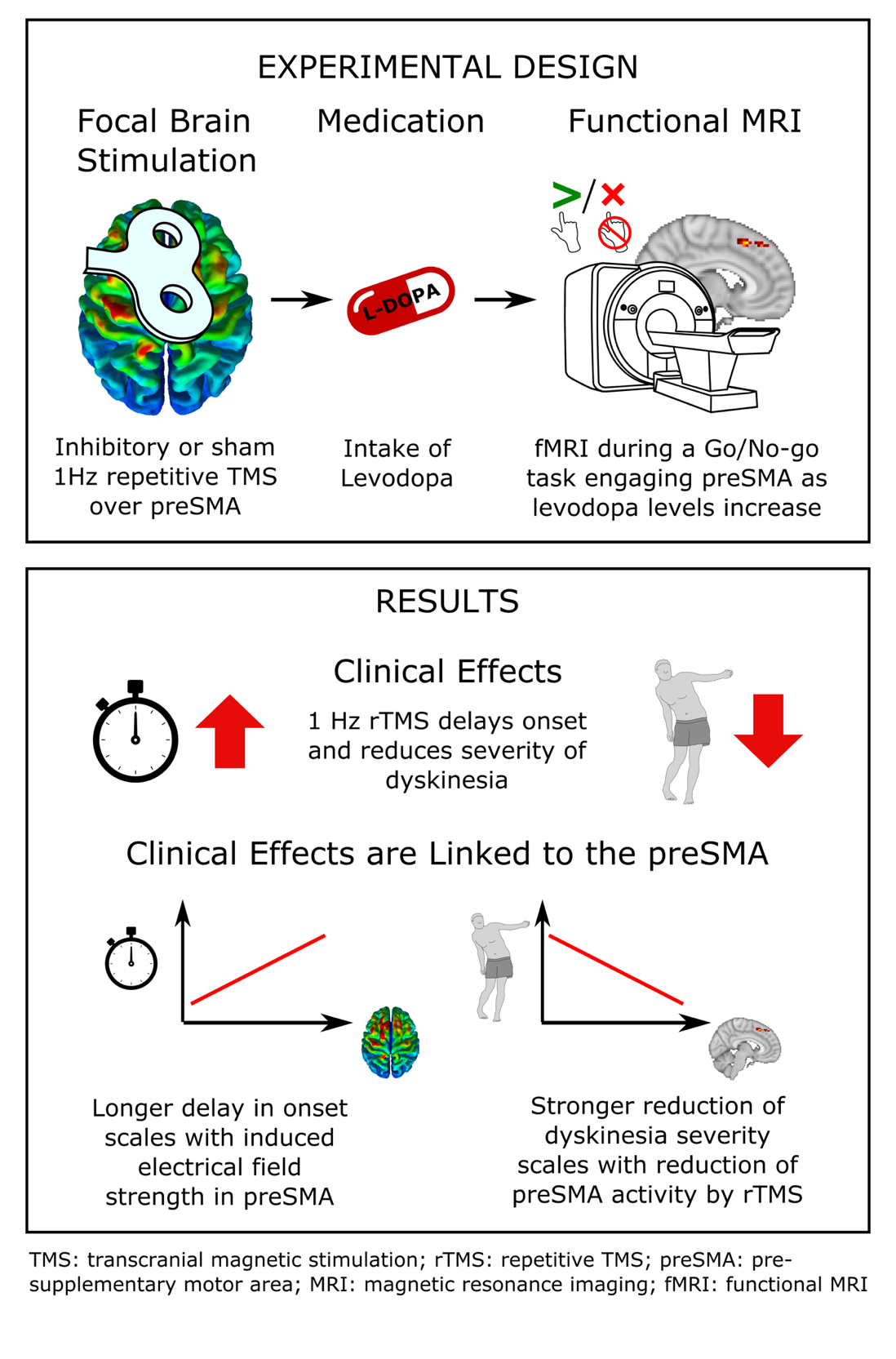New paper entitled "Low-frequency transcranial stimulation of pre-supplementary motor area alleviates levodopa-induced dyskinesia in Parkinson’s disease: a randomised cross-over trial" published in Brain Communications
PD patients with levodopa-induced dyskinesia (LID) received real or sham 1Hz inhibitory TMS over the preSMA in two separate sessions. They then received levodopa and were scanned with fMRI while they played a Go/No-go task as levodopa levels increased. A previous study from our lab by Herz et al., https://onlinelibrary.wiley.com/doi/full/10.1002/ana.24138, had shown an excessive increase in preSMA activity during NoGo trials over time to be associated with dyskinesia severity. However, it was unclear whether this excessive increase in preSMA activity was beneficial (suppressing LID) or detrimental (contributing to LID).
Here we show that the activity increase in preSMA is detrimental: real inhibitory TMS over preSMA reduced dyskinesia severity and prolonged the onset time of dyskinesia, compared to sham TMS.

Both effects were linked directly to the preSMA: A longer delay in time-to-onset was associated with a stronger electrical field induced in the preSMA. A stronger reduction in dyskinesia severity scaled with a stronger TMS-induced reduction of preSMA activity during Nogo trials. This shows that the preSMA is another promising target for the treatment of LID. These results corroborate a dual-circuit model of LID, with an involvement of both the motor basal-ganglia circuitry, but also “cognitive” nodes of the inhibitory control network.
With David Meder, Silas Nielsen, Anders Elkjær, Damian Herz, Annemette Løkkegaard, and Hartwig Siebner. Thanks for project support goes out to the Danish Parkinson Association and Lundbeckfonden.


